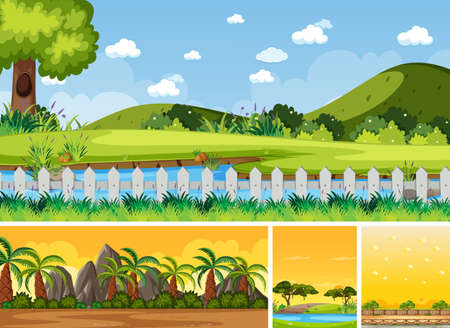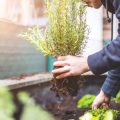1. Understanding the Basics of Edible Landscaping
Edible landscaping is a creative and practical way to design your backyard using plants that are not only beautiful but also produce food. Instead of planting only decorative flowers or shrubs, you can mix in fruits, vegetables, herbs, and even edible flowers to create a landscape thats both attractive and functional.
What Is Edible Landscaping?
At its core, edible landscaping blends traditional landscape design with food-producing plants. It’s about turning your lawn, flower beds, borders, and containers into productive spaces without sacrificing curb appeal. Think blueberry bushes instead of boxwoods, or a colorful bed of rainbow chard where ornamental grass might go.
Why Choose Edible Landscaping?
There are plenty of reasons to try edible landscaping in your backyard. Whether youre looking to eat healthier, save money, or do your part for the planet, this approach has something to offer.
Main Benefits of Edible Landscaping
| Benefit | Description |
|---|---|
| Fresh Produce at Your Fingertips | You’ll have easy access to seasonal fruits, veggies, and herbs—right from your backyard. |
| Lower Grocery Bills | Growing your own food can significantly cut down your grocery expenses over time. |
| Environmental Sustainability | Edible landscapes reduce the need for chemical fertilizers and long-distance food transport, lowering your carbon footprint. |
| Increased Biodiversity | A variety of edible plants attracts pollinators like bees and butterflies, promoting a healthy garden ecosystem. |
| Enhanced Aesthetic Appeal | Many edible plants are just as attractive as ornamentals—think vibrant kale or cascading strawberries. |
Combining Beauty and Functionality
The best part about edible landscaping is that it doesn’t look like a typical vegetable garden. You can arrange plants by color, height, or texture to create visual interest while still harvesting delicious ingredients. With a bit of planning, your yard can look stunning year-round and serve up fresh produce season after season.
Quick Examples:
- Front Yard: Line walkways with lavender (great for pollinators) and rosemary (perfect for cooking).
- Backyard Borders: Use raspberry or blackberry bushes as natural hedges.
- Pots & Containers: Plant cherry tomatoes or basil for portable beauty and flavor.
By understanding the basics of edible landscaping, youre one step closer to creating a backyard thats as nourishing as it is beautiful.
2. Planning Your Backyard Layout
Before you start planting fruits, veggies, and herbs in your backyard, its important to take a step back and plan your space wisely. Good planning helps you create a beautiful and functional edible landscape that thrives throughout the seasons.
Evaluate Your Space
Start by walking around your backyard and taking note of its size, shape, and existing features like trees, fences, patios, or sheds. Ask yourself:
- Where is there open ground?
- Are there any slopes or uneven areas?
- What parts of the yard do you use most often?
Observe Sunlight Patterns
Sunlight is key for growing healthy edible plants. Spend a day observing how sunlight moves across your yard. Most vegetables need at least 6–8 hours of direct sunlight daily. Here’s a simple guide to help you assess your space:
| Sunlight Level | Hours of Sun | Best Plant Types |
|---|---|---|
| Full Sun | 6–8+ hours | Tomatoes, peppers, squash, berries |
| Partial Sun | 4–6 hours | Lettuce, spinach, carrots, peas |
| Shade | < 4 hours | Kale, mint, chives, ferns (non-edibles) |
Test Your Soil
Your soil affects how well your plants grow. You can pick up a home soil test kit from a garden center or send a sample to your local Cooperative Extension Office. Check for:
- pH level: Most edibles prefer slightly acidic to neutral soil (pH 6.0–7.0).
- Nutrient levels: Ensure theres enough nitrogen, phosphorus, and potassium.
- Drainage: Avoid areas where water tends to pool.
Create a Functional Design
An edible landscape should be both attractive and easy to maintain. Think about how youll move through your garden and access different planting zones. Use this checklist as a starting point:
- Paths: Add mulch or stone walkways for easy access without compacting soil.
- Focal Points: Include eye-catching elements like an herb spiral, raised bed, or fruit tree in the center.
- Planting Zones: Group plants with similar needs together—like sun-loving tomatoes and peppers in one area and shade-tolerant greens in another.
- Irrigation: Plan for efficient watering with soaker hoses or drip systems.
Example Layout Ideas
| Zone Type | Description | Suggested Plants |
|---|---|---|
| Main Garden Bed | Largest sunny area for high-yield crops | Corn, tomatoes, zucchini, beans |
| Border Plantings | Aesthetic edges with edible flowers or herbs | Nasturtiums, basil, oregano, thyme |
| Pots & Containers | Great for patios or small spaces; easy to move | Lettuce, strawberries, cherry tomatoes |
| Trellis Area | Vertical space for climbing plants along fences or walls | Cucumbers, peas, pole beans |
The goal is to create a layout that reflects your lifestyle and makes gardening enjoyable. With thoughtful planning now, you’ll have an edible landscape that looks great and feeds your family all season long.
![]()
3. Choosing Edible Plants for Your Climate
One of the most important steps in designing an edible landscape is choosing the right plants for your local climate. The USDA Plant Hardiness Zone Map is a great starting point—it helps you understand which fruits, vegetables, herbs, and edible flowers are most likely to thrive in your area. Selecting climate-appropriate plants not only increases your chances of success but also reduces maintenance and water usage.
Know Your USDA Hardiness Zone
Your USDA hardiness zone is based on the average annual minimum winter temperature in your region. For example, Southern California might be in Zone 9 or 10, while parts of the Midwest could fall into Zones 4 or 5. Knowing your zone helps you narrow down plant choices that can handle your local weather conditions year-round.
Select Low-Maintenance, High-Yield Plants
Once youve identified your zone, look for varieties that are both easy to grow and highly productive. These plants will give you more food with less effort—perfect for busy homeowners or those new to gardening.
Examples of Easy-Care Edible Plants by Zone
| USDA Zone | Fruits | Vegetables | Herbs | Edible Flowers |
|---|---|---|---|---|
| Zone 3–5 | Apples, Raspberries | Kale, Carrots, Peas | Chives, Mint | Nasturtiums, Violets |
| Zone 6–7 | Pears, Blueberries | Lettuce, Beans, Zucchini | Basil, Thyme | Borage, Calendula |
| Zone 8–10 | Lemons, Figs | Tomatoes, Peppers, Eggplant | Cilantro, Oregano | Marigolds, Pansies |
Mix and Match for Beauty and Functionality
A stunning edible landscape combines visual appeal with productivity. Think about colors, textures, and plant heights when making your selections. For example, combine tall tomato plants with low-growing basil around the base. Add some bright orange nasturtiums as a border—they’re not only beautiful but also edible and pest-resistant.
Pro Tip:
If youre unsure about what grows best in your area, check with a local nursery or your county’s Cooperative Extension office. They often provide free resources tailored to your specific region.
Selecting the right plants for your climate ensures that your edible landscape will flourish with less effort and more reward. Start with a few reliable staples and experiment as you gain confidence!
4. Integrating Aesthetics with Function
Creating an edible landscape doesnt mean sacrificing beauty. In fact, you can design a backyard that’s both productive and visually stunning by blending smart gardening techniques with basic design principles. Here’s how to make your edible garden not only functional but also a feast for the eyes.
Use Color, Texture, and Height for Visual Interest
When planning your edible landscape, think like a designer. Choose plants that offer a variety of colors—not just in their fruit or vegetables, but also in their leaves and stems. Mix textures by combining leafy greens with spiky herbs or trailing vines. Use plant height to create layers that draw the eye upward and give your garden depth.
Examples of Color, Texture, and Height Combinations
| Design Element | Example Plants | Visual Effect |
|---|---|---|
| Color | Rainbow chard, purple basil, golden tomatoes | Adds vibrancy and contrast |
| Texture | Kale (curly), rosemary (woody), lettuce (smooth) | Creates visual variety and interest |
| Height | Corn (tall), bush beans (medium), thyme (low) | Establishes depth and natural layering |
Incorporate Raised Beds for Structure and Order
Raised beds are a great way to organize your space while adding structure to the design. They help define planting zones, improve soil drainage, and make gardening more accessible. You can build them from wood, stone, or recycled materials to match your backyard style.
Try Vertical Gardening to Save Space and Add Dimension
If youre working with a smaller yard or want to add height to your design, vertical gardening is the way to go. Use trellises for climbing plants like cucumbers or beans, hang baskets with strawberries or herbs, or install wall planters for leafy greens. This technique not only saves ground space but also adds visual interest.
Use Companion Planting for Beauty and Balance
Companion planting helps you grow healthier plants while making your garden look fuller and more diverse. Pairing certain crops together can deter pests, improve growth, and even enhance flavor. Plus, it creates a lush, layered look that feels like a natural ecosystem.
Popular Companion Planting Combos
| Main Crop | Companion Plant | Benefits |
|---|---|---|
| Tomatoes | Basil & Marigolds | Repels pests and enhances flavor |
| Carrots | Chives & Lettuce | Saves space and deters aphids |
| Cucumbers | Dill & Nasturtiums | Lures beneficial insects and repels beetles |
By combining thoughtful design elements with practical gardening methods, you can craft an edible landscape that looks as good as it tastes. Whether youre planting herbs along a pathway or mixing vegetables into flower beds, the key is to balance function with flair.
5. Seasonal Maintenance and Care
Keeping your edible landscape healthy and productive year-round requires a little seasonal TLC. From mulching in the spring to pruning in the winter, understanding what your garden needs in each season will help you enjoy a thriving and beautiful backyard.
🌱 Spring Tasks
- Mulching: Apply a fresh layer of mulch around plants to retain moisture and suppress weeds.
- Fertilizing: Feed your soil with compost or an organic fertilizer to support new growth.
- Pest Control: Watch for early signs of pests like aphids or slugs and use natural remedies to control them.
☀️ Summer Tasks
- Watering: Water deeply and early in the day to prevent evaporation and reduce disease risk.
- Pest Monitoring: Check regularly for tomato hornworms, beetles, and other common summer pests.
- Harvesting: Pick fruits and vegetables often to encourage more production.
🍂 Fall Tasks
- Cleansing Beds: Remove spent plants and fallen leaves to prevent disease buildup.
- Sow Cool-Weather Crops: Plant kale, spinach, and carrots for a fall harvest.
- Add Compost: Enrich beds with compost to prepare for winter dormancy.
❄️ Winter Tasks
- Pruning: Prune dormant fruit trees and berry bushes to shape them and encourage future growth.
- Tidy Up Tools: Clean and sharpen garden tools so they’re ready for spring.
- Plan Ahead: Start planning next year’s layout and order seeds early.
Your Year-Round Garden Care at a Glance
| Season | Main Tasks |
|---|---|
| Spring | Mulch, fertilize, manage early pests |
| Summer | Irrigate, monitor pests, harvest frequently |
| Fall | Tidy beds, plant cool crops, compost |
| Winter | Prune trees, clean tools, plan garden |
A little attention each season goes a long way in keeping your edible landscape both beautiful and bountiful. By staying on top of these simple tasks, youll be rewarded with delicious homegrown produce all year long!
6. Harvesting and Enjoying the Fruits of Your Labor
Now that your edible landscape is thriving, its time for the most rewarding part—harvesting and enjoying what youve grown. Knowing when and how to harvest ensures you get the best flavor and nutrition from your backyard bounty.
Picking at Peak Ripeness
Timing is everything when it comes to harvesting. Picking fruits and vegetables at their peak ensures maximum taste and nutritional value. Here are some general guidelines for popular backyard crops:
| Crop | Signs of Ripeness |
|---|---|
| Tomatoes | Fully colored (red, yellow, or purple depending on variety), slightly soft to the touch |
| Zucchini | 6-8 inches long, firm skin, glossy appearance |
| Lettuce | Leaves are full-sized but still tender; harvest before it bolts (goes to seed) |
| Apples | Firm, full color, easily comes off the branch with a gentle twist |
| Basil | Harvest before flowering; leaves are bright green and aromatic |
Using Fresh Produce in Everyday Meals
Your edible landscape can inspire daily meal planning. Here are simple ideas for incorporating fresh produce into your kitchen:
- Herbs: Add fresh basil or rosemary to pasta dishes or roasted veggies.
- Lettuce & Greens: Build colorful salads or toss them into wraps and sandwiches.
- Fruits: Slice peaches or berries over yogurt or cereal for breakfast.
- Zucchini & Tomatoes: Sauté with garlic and olive oil as a quick side dish.
Preserving Your Harvest
If you have more produce than you can use right away, preserving helps reduce waste and lets you enjoy homegrown flavors year-round. Here are a few methods:
Freezing
Great for berries, green beans, corn, and herbs. Simply wash, chop if needed, and store in freezer-safe bags or containers.
Canning
A good option for tomatoes, jams, pickles, and sauces. Use proper canning techniques to ensure safety and shelf life.
Drying
Dried herbs like oregano and thyme retain strong flavor. You can air-dry them by hanging bundles upside down in a cool, dry place.
Preservation Method Comparison
| Method | Best For | Shelf Life (Approx.) |
|---|---|---|
| Freezing | Berries, leafy greens, chopped herbs | 6–12 months |
| Canning | Salsas, sauces, fruits, pickles | 1–2 years (if sealed properly) |
| Drying | Herbs, peppers, apple slices | Up to 1 year (in airtight containers) |
With a little planning, you’ll not only savor your gardens rewards during the season but also stock your pantry with tasty reminders of your hard work throughout the year.


